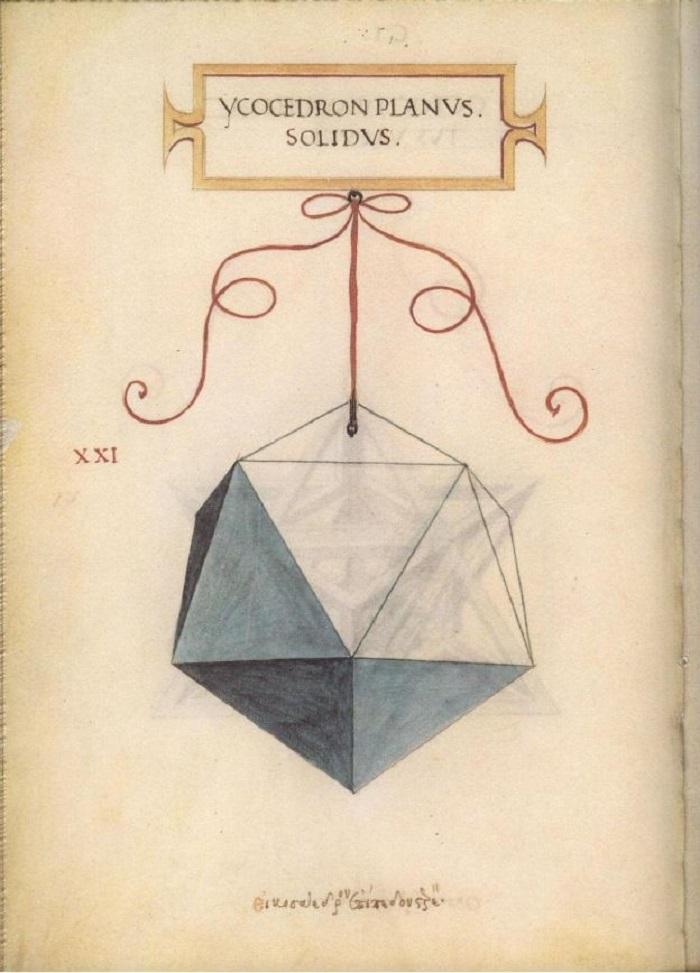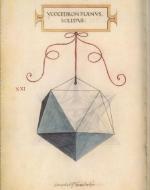Created by Garrett Mulcahy on Sun, 05/12/2019 - 18:15
Description:
Taken from De Divina Proportione, this sketch is da Vinci’s solid face rendering of the icosahedron, which has twenty equilateral triangles as its faces. This depiction is called “solid face” because the faces are opaque— notice that an observer can only see the “front” of the shape. Even with da Vinci’s mastery of perspective, it is still difficult from this representation to understand what the entire polyhedron looks like in space (for example, the backside of the polyhedron is unclear). An interesting feature of this sketch (and all other of da Vinci’s sketches in De Divina Proportione) is that the polyhedron is dangling from a string—it is this common feature that suggests that da Vinci may have used Pacioli’s woodcuts of these polyhedra to help guide his sketches.
Source:
Hart, George W. “Leonardo Da Vinci's Polyhedra.” George Hart, www.georgehart.com/virtual-polyhedra/leonardo.html.
Image source:
Swetz, Frank J. "Leonardo da Vinci's Geometric Sketches – Icosahedron." Convergence (June 2010), DOI:10.4169/loci002559
Copyright:
Associated Place(s)
Timeline of Events Associated with Solid Face Icosahedron
Part of Group:
Featured in Exhibit:
Artist:
- Leonardo da Vinci


